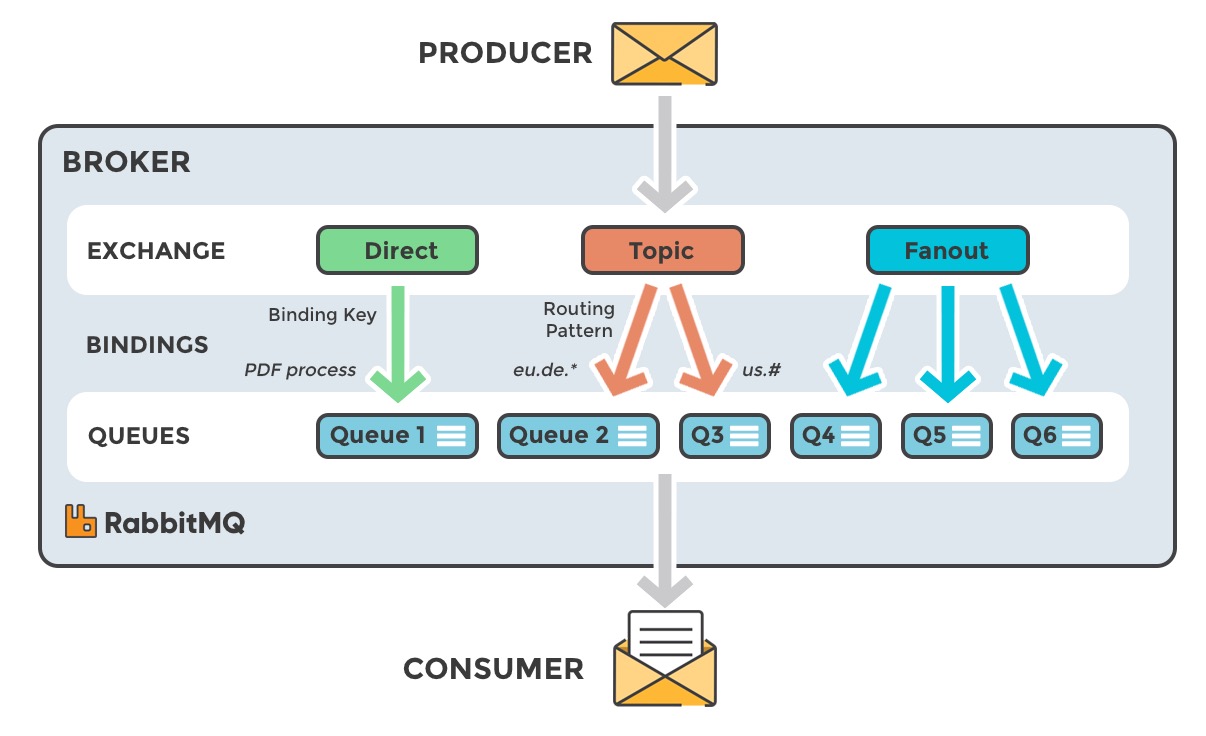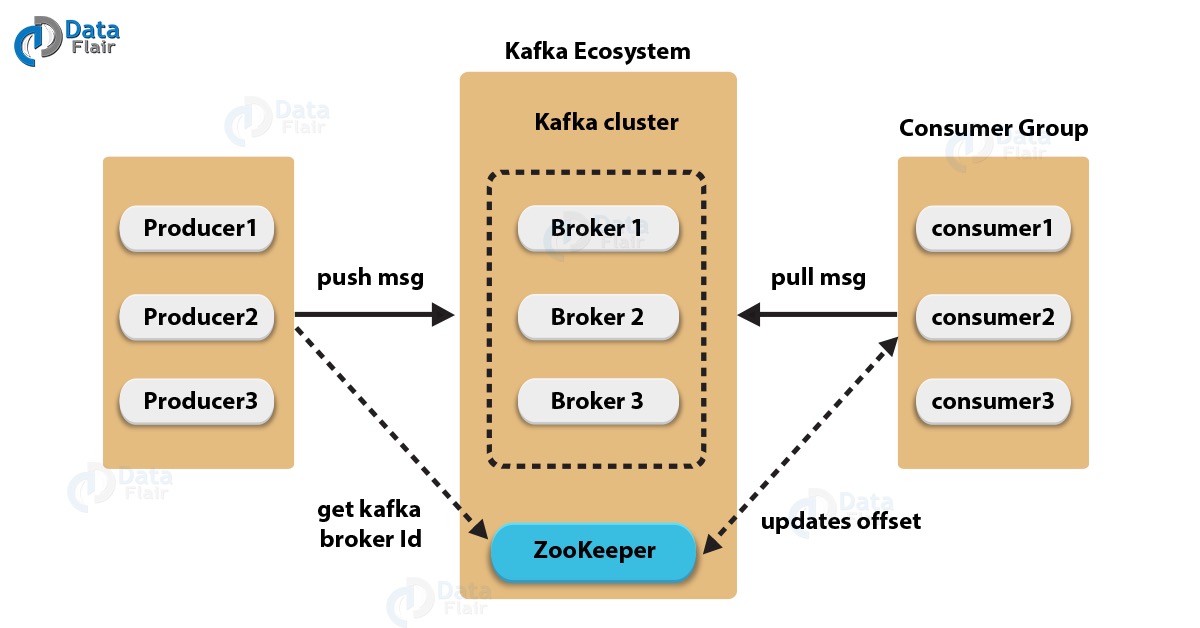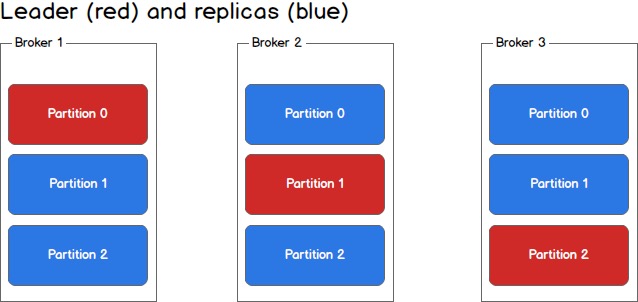message queue
Contents
overview
what:
- 发送消息;
- 进程间通信
components: producer —> broker —–> consumer;
pros: 进程间通信方式 , 应用解耦
- reliabilty: continue work when different part of your system go offine
- high performce
- async: producer continue work without waiting consumer
- Scalability: 按需增加 producer,consumer, queue
cons:
- 无法即时得到反馈
use case:
- 验证码,邮件
- 大流量: 日志,秒杀
3. message queue 对比;

kafka overview;

1. structure

topic = N个partition(N replicas)

1. 可靠性保证;
发送保证:
- request.required.acks:
接收保证:
- min.insync.replicas:
- 分布式架构;
2. consumer
-
how to cnsume
-
kafka 是有序的吗? 如何有序;
batch produce and consumer
producer
|
|
consumer
|
|
2. 为什么kafka 快;
- partition并行处理;
- 顺序写入(追加写入);
- zero copy;
3. tuning (调优);
impore throughout;
- producer
- batch.size = 16kbytes;
- linger.ms = 0;
- broker:
- producer:
- 批量读写, 并进行压缩;
3. 是否会重复消费; 如何解决?
不会; 什么机制保障;
- xx
kafka 消息传递的过程;
-
producer:
- createTopic:
1 2key: key | null; timestamp: xxx;
12. send to broker ; - createTopic:
-
broker;
- 写入某个partition;
- 明确指定
- 有key则hash, 无key则轮询(round-robin)
- 写入某个partition;
-
consumer: